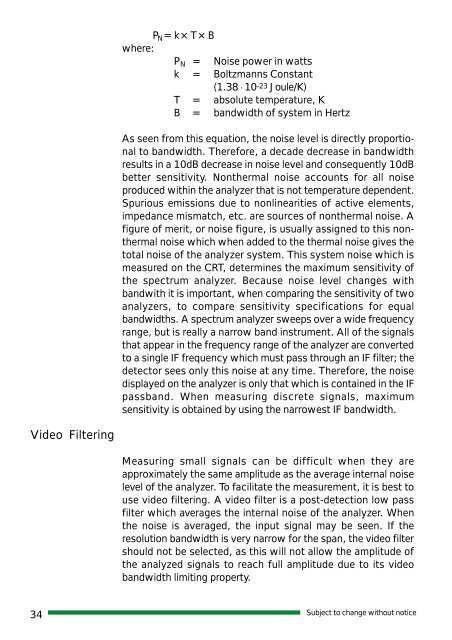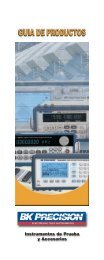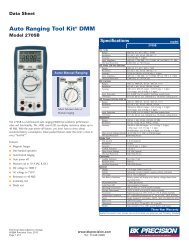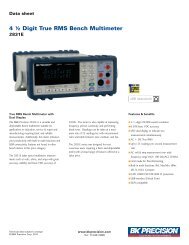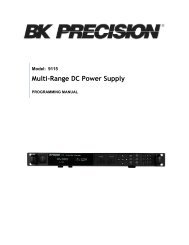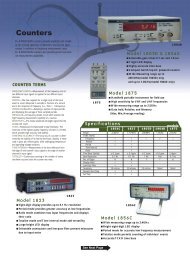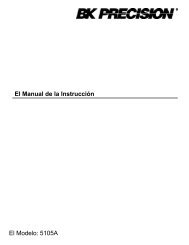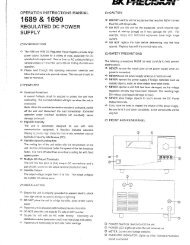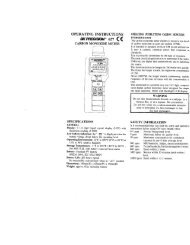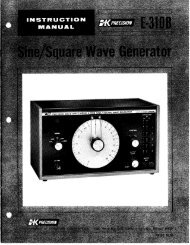2635 manual - BK Precision
2635 manual - BK Precision
2635 manual - BK Precision
Create successful ePaper yourself
Turn your PDF publications into a flip-book with our unique Google optimized e-Paper software.
P N =k×T×B<br />
where:<br />
P N = Noise power in watts<br />
k = Boltzmanns Constant<br />
(1.38 ⋅ 10 -23 Joule/K)<br />
T = absolute temperature, K<br />
B = bandwidth of system in Hertz<br />
As seen from this equation, the noise level is directly proportional<br />
to bandwidth. Therefore, a decade decrease in bandwidth<br />
results in a 10dB decrease in noise level and consequently 10dB<br />
better sensitivity. Nonthermal noise accounts for all noise<br />
produced within the analyzer that is not temperature dependent.<br />
Spurious emissions due to nonlinearities of active elements,<br />
impedance mismatch, etc. are sources of nonthermal noise. A<br />
figure of merit, or noise figure, is usually assigned to this nonthermal<br />
noise which when added to the thermal noise gives the<br />
total noise of the analyzer system. This system noise which is<br />
measured on the CRT, determines the maximum sensitivity of<br />
the spectrum analyzer. Because noise level changes with<br />
bandwith it is important, when comparing the sensitivity of two<br />
analyzers, to compare sensitivity specifications for equal<br />
bandwidths. A spectrum analyzer sweeps over a wide frequency<br />
range, but is really a narrow band instrument. All of the signals<br />
that appear in the frequency range of the analyzer are converted<br />
to a single IF frequency which must pass through an IF filter; the<br />
detector sees only this noise at any time. Therefore, the noise<br />
displayed on the analyzer is only that which is contained in the IF<br />
passband. When measuring discrete signals, maximum<br />
sensitivity is obtained by using the narrowest IF bandwidth.<br />
Video Filtering<br />
Measuring small signals can be difficult when they are<br />
approximately the same amplitude as the average internal noise<br />
level of the analyzer. To facilitate the measurement, it is best to<br />
use video filtering. A video filter is a post-detection low pass<br />
filter which averages the internal noise of the analyzer. When<br />
the noise is averaged, the input signal may be seen. If the<br />
resolution bandwidth is very narrow for the span, the video filter<br />
should not be selected, as this will not allow the amplitude of<br />
the analyzed signals to reach full amplitude due to its video<br />
bandwidth limiting property.<br />
34 Subject to change without notice


